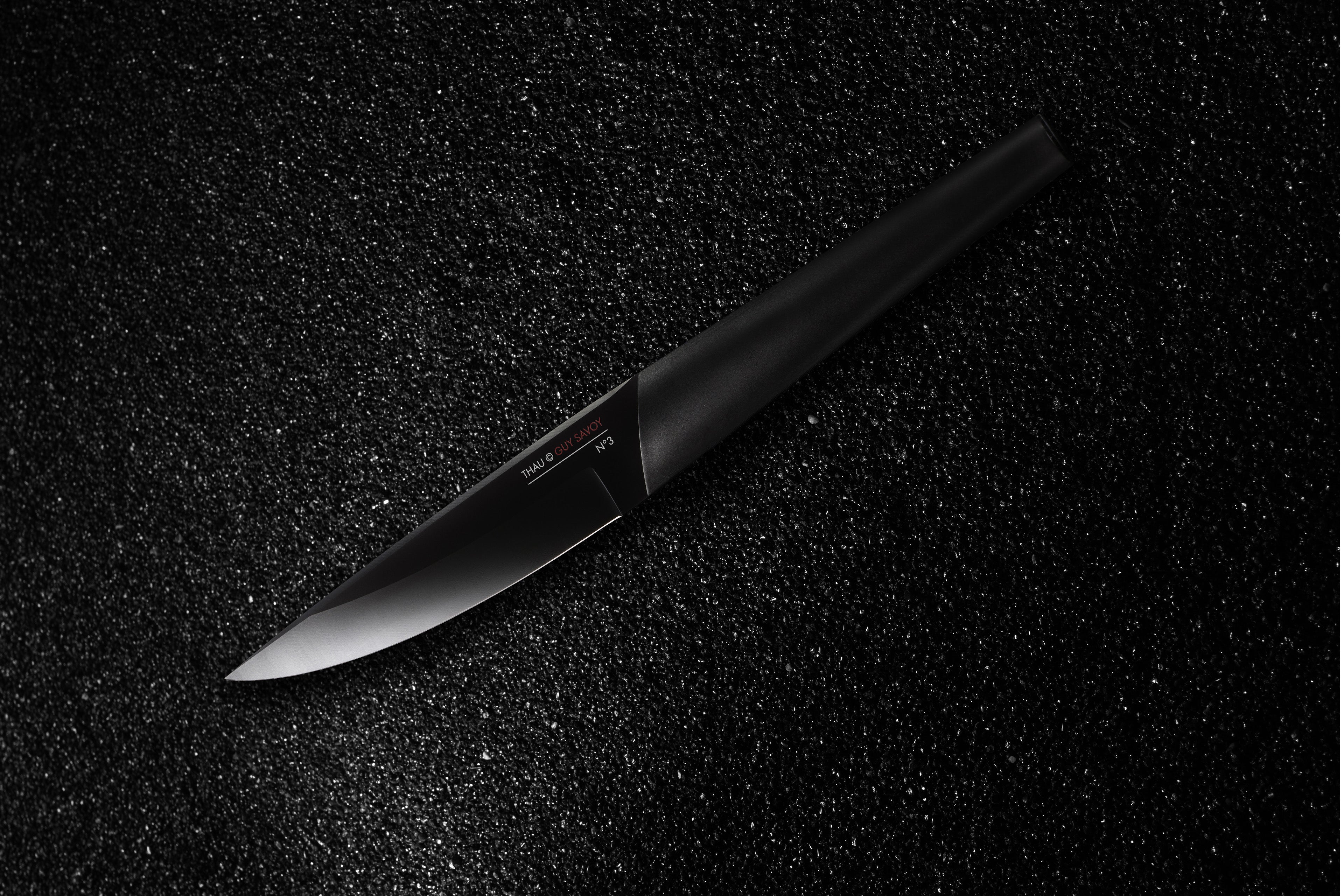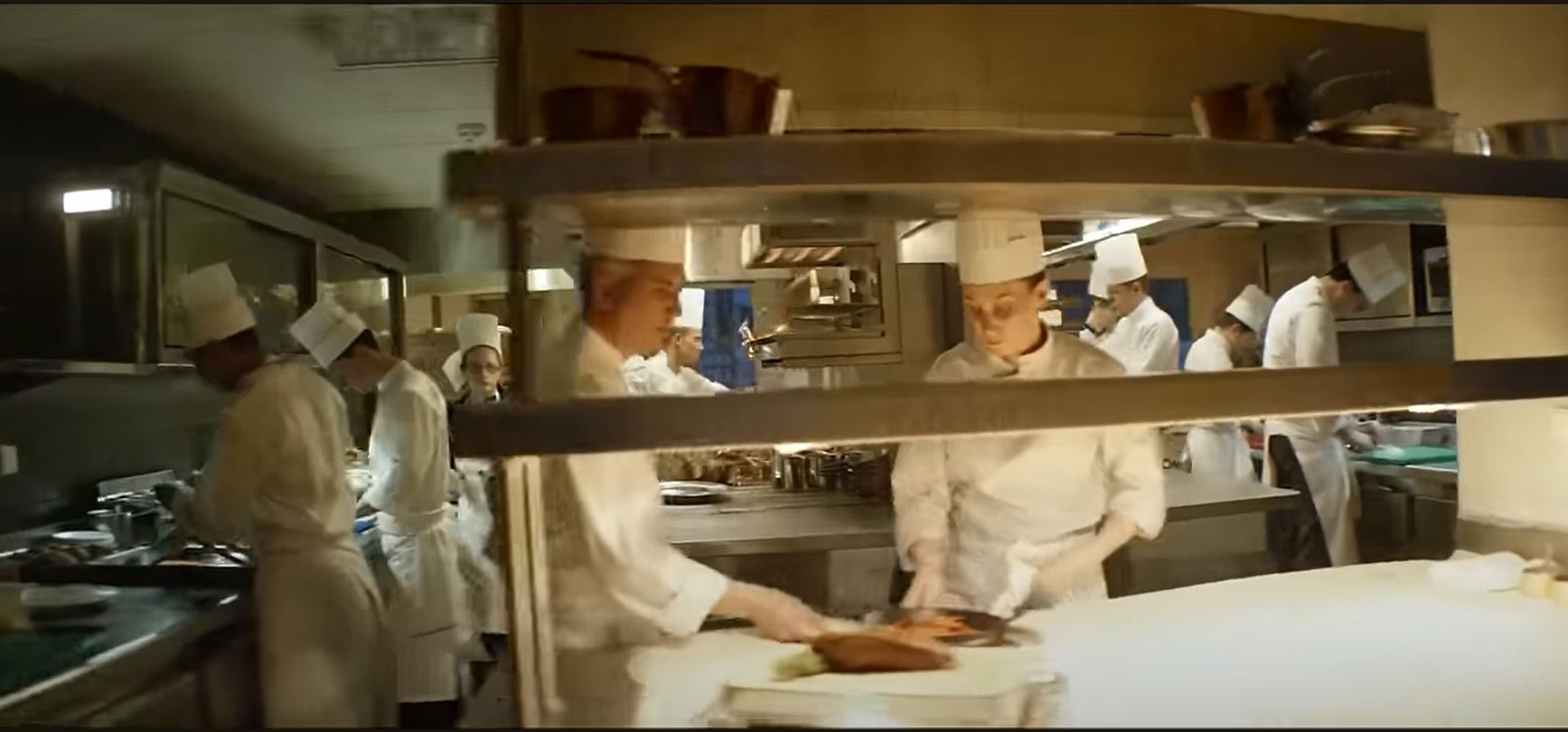


"Thau" N°1 Paring knife by Guy Savoy and Bruno Moretti for Tarrerias Bonjean
It’s the smallest, but also the most multipurpose. It’s the "all-purpose knife," perfect for the countless peeling tasks in the kitchen, and for those small jobs, without which great dishes wouldn’t exist!

Spécifications produit
(en g)
230
(en mm)
100.1
(en mm)
117.24
Technical polymer
(Par côté en °)
16
full tang
Alenox
Smooth
54.56

Deux gammes de couteaux ont vu le jour
Fruits d’une observation et d’une réflexion du duo Guy Savoy - Bruno Moretti, de technologies de haut niveau, du savoir-faire et de la capacité de production industrielle de Tarrerias Bonjean, deux gammes de couteaux ont vu le jour : les couteaux de table « Ulu et Savik » d’une part, et les couteaux de cuisine couteaux "de Thau" d’autre part.

Découvrir nos gammes de couteaux
La gamme de couteaux de table « Ulu et Savik » correspond au souhait de Guy Savoy d’établir une continuité entre la cuisine et la salle à manger, les deux univers devant se répondre l’un l’autre.
La gamme de couteaux de cuisine « de Thau » associe les qualités esthétiques aux qualités de confort au travail. Elle est destinée aux passionnés de cuisine, professionnels ou amateurs.
Kitchen knives with an "aero-aqua dynamic" design!
The blade is deeply engraved, not just surface-marked like most knives; the fine and extremely detailed engraving is then carefully lacquered by hand. This blade, made from hardened steel, is composed of mox steel combined with an almost indestructible PVD treatment, providing exceptional resistance to corrosion. This treatment has given the blade its black colour, matching the handle, creating a seamless continuity between the two and giving the knife a sleek, aggressive, yet smooth profile—like a shiny whale leaping out of the water: an "aero-aqua dynamic" shape!
Exceptionally comfortable kitchen knives
Designer Bruno Moretti observed the work in kitchens and discovered that chefs often keep the same knife in hand for hours, frequently pressing their index finger on the back of the blade for added strength and precision, and that the hand or finger could sometimes slip on the blade. He also noticed that some handles suited certain hands better than others. He set out to create knives offering maximum comfort for chefs. The handle is significantly larger than the standard size, providing equal comfort for all hands, as they can be positioned at different points along the handle depending on their size and shape. The angle of the bolster (a 45° connection between the blade and handle) has been reversed to ensure better hand protection. The back of the blade has been smoothed to avoid causing discomfort during prolonged contact with the finger.




















